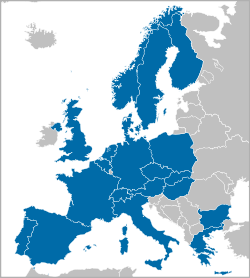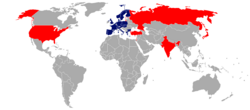CERN
|
||||||||||||||||
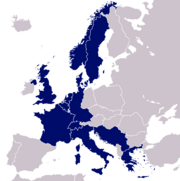
The 12 founding member states of CERN in 1954 a[›] (map borders from 1989)
|
||||||||||||||||
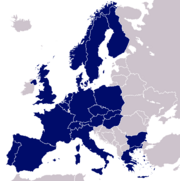
54 years after its foundation, membership to CERN increased to 20 states, 18 of which are also EU members as of 2008
|
||||||||||||||||
The European Organization for Nuclear Research (French: Organisation Européenne pour la Recherche Nucléaire), known as CERN (see Naming), pronounced /ˈsɝːn/ (IPA: [sɛʀn] in French), is the world's largest particle physics laboratory, situated in the northwest suburbs of Geneva on the Franco-Swiss border, established in 1954.[1] The organization has twenty European member states, and is currently the workplace of approximately 2,600 full-time employees, as well as some 7,931 scientists and engineers (representing 500 universities and 80 nationalities).
CERN's main function is to provide the particle accelerators and other infrastructure needed for high-energy physics research. Numerous experiments have been constructed at CERN by international collaborations to make use of them. The main site at Meyrin also has a large computer centre containing very powerful data processing facilities primarily for experimental data analysis, and because of the need to make them available to researchers elsewhere, has historically been (and continues to be) a major wide area networking hub.
As an international facility, the CERN sites are officially under neither Swiss nor French jurisdiction. Member states' contributions to CERN for the year 2008 totalled CHF 1 billion (approximately €664 million, US$ 1 billion).[2]
Contents |
History
The convention establishing CERN was signed on 29 September 1954 by 12 countries in Western Europe.a[›][1] The acronym CERN originally stood, in French, for Conseil Européen pour la Recherche Nucléaire (European Council for Nuclear Research), which was a provisional council for setting up the laboratory, established by 11 European governments in 1952. The acronym was retained for the new laboratory after the provisional council was dissolved, even though the name changed to the current Organisation Européenne pour la Recherche Nucléaire (European Organization for Nuclear Research) in 1954.[3] According to Lew Kowarski, a former director of CERN, when the name was changed, the acronym could have become the awkward OERN, and Heisenberg said "But the acronym can still be CERN even if the name is [not]".
Soon after its establishment, the work at the laboratory went beyond the study of the atomic nucleus, into higher-energy physics, an activity which is mainly concerned with the study of interactions between particles. Therefore the laboratory operated by CERN is commonly referred to as the European laboratory for particle physics (Laboratoire européen pour la physique des particules) which better describes the current research being performed at CERN.
Scientific achievements
Several important achievements in particle physics have been made during experiments at CERN. These include, but are not limited to, the following.
- 1973: The discovery of neutral currents in the Gargamelle bubble chamber[4].
- 1983: The discovery of W and Z bosons in the UA1 and UA2 experiments[5].
- 1989: The determination of the number of neutrino families at the Large Electron Positron Collider (LEP) operating on the Z boson peak.
- 1995: The first creation of antihydrogen atoms in the PS210 experiment[6].
- 1999: The discovery of the direct CP-violation in the NA48 experiment[7].
The 1984 Nobel Prize in physics was awarded to Carlo Rubbia and Simon van der Meer for the developments that led to the discoveries of the W and Z bosons.
The 1992 Nobel Prize in physics was awarded to CERN staff researcher Georges Charpak "for his invention and development of particle detectors, in particular the multiwire proportional chamber."
Computer science

The World Wide Web began as a CERN project called ENQUIRE, initiated by Sir Tim Berners-Lee and Robert Cailliau in 1989. Berners-Lee and Cailliau were jointly honored by the ACM in 1995 for their contributions to the development of the World Wide Web.
Based on the concept of hypertext, the project was aimed at facilitating sharing information among researchers. The first website went on-line in 1991. On 30 April 1993, CERN announced that the World Wide Web would be free to anyone. A copy of the original first webpage, created by Berners-Lee, is still published on the World Wide Web Consortium website as a historical document.
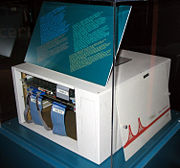
Prior to the Web's development, CERN had been a pioneer in the introduction of Internet technology, beginning in the early 1980s. A short history of this period can be found here.
More recently, CERN has become a centre for the development of Grid computing, hosting among others the Enabling Grids for E-sciencE (EGEE) and LHC Computing Grid projects. It also hosts the CERN Internet Exchange Point (CIXP), one of the two main Internet Exchange Points in Switzerland. CERN's computer network is connected to JANET (formerly UKERNA), the research and education network, JANET aids CERN to disperse large data over a network grid for closer analysis.
Particle accelerators
Current complex

CERN operates a network of six accelerators and a decelerator. Each machine in the chain increases the energy of particle beams before delivering them to experiments or to the next more powerful accelerator. Currently active machines are:
- Two linear accelerators generate low energy particles for injection into the Proton Synchrotron. The 50 MeV Linac2 is for protons, and the 4.2 MeV/u Linac3 is for heavy ions.[8]
- The Proton Synchrotron Booster increases the energy of particles generated by the proton linear accelerator before they are transferred to the other accelerators.
- The Low Energy Antiproton Ring (formerly "LEIR") accelerates the ions from the ion linear accelerator, before transferring them to the Proton Synchrotron (PS). This accelerator was commissioned in 2005, after having been reconfigured from the previous Low Energy Anti-proton Ring (LEAR).
- The 28 GeV Proton Synchrotron (PS), built in 1959 and still operating as a feeder to the more powerful SPS.
- The Super Proton Synchrotron (SPS), a circular accelerator with a diameter of 2 kilometres built in a tunnel, which started operation in 1976. It was designed to deliver an energy of 300 GeV and was gradually upgraded to 450 GeV. As well as having its own beamlines for fixed-target experiments, it has been operated as a proton-antiproton collider, and for accelerating high energy electrons and positrons which were injected into the Large Electron-Positron Collider (LEP). From 2008 onwards, it will inject protons and heavy ions into the Large Hadron Collider (LHC).
- The On-Line Isotope Mass Separator (ISOLDE), which is used to study unstable nuclei. Particles are initially accelerated in the PS Booster before entering ISOLDE. It was first commissioned in 1967 and was rebuilt with major upgrades in 1974 and 1992.
- The Antiproton Decelerator (AD), which reduces the velocity of antiprotons to about 10% the speed of light for research into antimatter.
The Large Hadron Collider
Most of the activities at CERN are currently directed towards building a new collider, the Large Hadron Collider (LHC) and the experiments for it. The LHC represents a large-scale, worldwide scientific cooperation project.
The LHC tunnel is located 100 metres underground, in the region between the Geneva airport and the nearby Jura mountains. It uses the 27 km circumference circular tunnel previously occupied by LEP which was closed down in November 2000. CERN's existing PS/SPS accelerator complexes will be used to pre-accelerate protons which will then be injected into the LHC.
Six experiments (CMS, ATLAS, LHCb, TOTEM, LHC-forward and ALICE) are currently being built, and will be running on the collider; each of them will study particle collisions under a different point of view, and with different technologies. Construction for these experiments required an extraordinary engineering effort. Just as an example, to lower the pieces for the CMS experiment into the underground cavern which will host it, a special crane will have to be rented from Belgium, which will be able to lift the almost 2000 tons for each piece. The first of the approximately 5,000 magnets necessary for construction was lowered down a special shaft at 13:00 GMT on 7 March 2005.
This accelerator will generate vast quantities of computer data, which CERN will stream to laboratories around the world for distributed processing (making use of a specialised GRID infrastructure, the LHC Computing Grid). In April 2005, a trial successfully streamed 600 MB per second to seven different sites across the world. If all the data generated by the LHC is to be analysed, then scientists must achieve 1,800 MB per second before 2008.
The initial particle beams were injected into the LHC August 2008,[9] the first attempt to circulate a beam through the entire LHC was at 0830Z on 10 September 2008,[10] but the system was taken down for repairs on 19 September 2008 and due to a faulty magnet it must be reheated, repaired, and recooled. With this and the previously scheduled winter shutoff due to power consumption, no results are expected before February 2009.
Decommissioned accelerators
- The original linear accelerator (Linac1).
- The 600 MeV Synchrocyclotron (SC) which started operation in 1957 and was shut down in 1991.
- The Intersecting Storage Rings (ISR), an early collider built from 1966 to 1971 and operated until 1984.
- The Large Electron-Positron Collider (LEP), which operated from 1989 to 2000 and was the largest machine of its kind, housed in a 27 km-long circular tunnel which now houses the Large Hadron Collider.
- The Low Energy Antiproton Ring (LEAR), commissioned in 1982, which assembled the first pieces of true antimatter, in 1995, consisting of nine atoms of antihydrogen. It was closed in 1996, and superseded by the Antiproton Decelerator.
Sites

The smaller accelerators are located on the main Meyrin site (also known as the West Area), which was originally built in Switzerland alongside the French border, but has been extended to span the border since 1965. The French side is under Swiss jurisdiction and so there is no obvious border within the site, apart from a line of marker stones. There are six entrances to the Meyrin site:
- A, in Switzerland. Open for all CERN personnel at specific times.
- B, in Switzerland. Open for all CERN personnel at all times. Often referred to as the main entrance.
- C, in Switzerland. Open for all CERN personnel at specific times.
- D, in Switzerland. Open for goods reception at specific times.
- E, in France. Open for French-resident CERN personnel at specific times. Controlled by customs personnel. Named "Porte Charles de Gaulle" in recognition of his role in the creation of the CERN. [11]
- Tunnel entrance, in France. Open for equipment transfer to and from CERN sites in France by personnel with a specific permit. This is the only permitted route for such transfers. Under the CERN treaty, no taxes are payable when such transfers are made. Controlled by customs personnel.
The SPS and LEP/LHC tunnels are located underground almost entirely outside the main site, and are mostly buried under French farmland and invisible from the surface. However they have surface sites at various points around them, either as the location of buildings associated with experiments or other facilities needed to operate the colliders such as cryogenic plants and access shafts. The experiments themselves are located at the same underground level as the tunnels at these sites.
Three of these experimental sites are in France, with ATLAS in Switzerland, although some of the ancillary cryogenic and access sites are in Switzerland. The largest of the experimental sites is the Prévessin site, also known as the North Area, which is the target station for non-collider experiments on the SPS accelerator. Other sites are the ones which were used for the UA1, UA2 and the LEP experiments (the latter which will be used for LHC experiments).
Outside of the LEP and LHC experiments, most are officially named and numbered after the site where they were located. For example, NA32 was an experiment looking at the production of charmed particles and located at the Prévessin (North Area) site while WA22 used the BEBC bubble chamber at the Meyrin (West Area) site to examine neutrino interactions. The UA1 and UA2 experiments were considered to be in the Underground Area, i.e. situated underground at sites on the SPS accelerator.
Member states
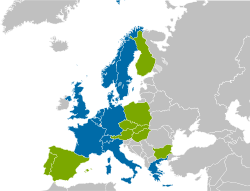
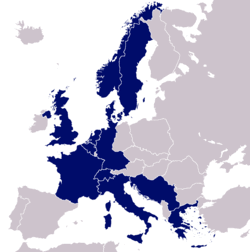
The original twelve CERN signatories from 1954 were:
 Belgium
Belgium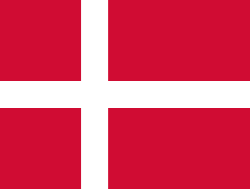 Denmark
Denmark Germany (at first only West Germany)
Germany (at first only West Germany) France
France Greece
Greece Italy
Italy Norway
Norway Sweden
Sweden Switzerland
Switzerland Netherlands
Netherlands United Kingdom
United Kingdom Yugoslavia (later withdrawn)
Yugoslavia (later withdrawn)
All founding members have so far (as of 2008) remained in the CERN organisation, except Yugoslavia which left in 1961 and never re-joined.
Since its foundation, CERN regularly accepted new members. All new members have remained in the organisation continuously since their acceptance, except Spain which joined in 1961, withdrew eight years later, and joined anew in 1983. CERN's membership history is as follows:
 Austria joined in 1959, bringing the total number of members to 13
Austria joined in 1959, bringing the total number of members to 13 Yugoslavia left in 1961 (12 members)
Yugoslavia left in 1961 (12 members)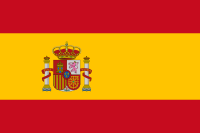 Spain joined in 1961 (thus increasing the number of member states to 13 again), left in 1969 (12 members), rejoined in 1983 (13 members)
Spain joined in 1961 (thus increasing the number of member states to 13 again), left in 1969 (12 members), rejoined in 1983 (13 members)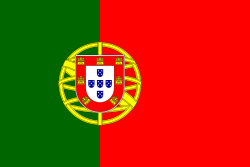 Portugal joined in 1985 (14 member states)
Portugal joined in 1985 (14 member states)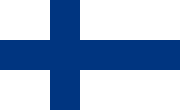 Finland joined in 1991
Finland joined in 1991 Poland joined in 1991 (together with Finland bringing the number of participating member states to 16)
Poland joined in 1991 (together with Finland bringing the number of participating member states to 16) Hungary joined in 1992 (17 members)
Hungary joined in 1992 (17 members)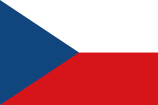 Czech Republic joined in 1993
Czech Republic joined in 1993 Slovakia joined in 1993 (together with Czechia increasing the total members to 19)
Slovakia joined in 1993 (together with Czechia increasing the total members to 19) Bulgaria joined in 1999 (20 member states)
Bulgaria joined in 1999 (20 member states) Turkey joined in 2008
Turkey joined in 2008
There are currently twenty member countries, 18 of which are also European Union member states.
Eight additional international organizations or countries have "observer status":
Public exhibits
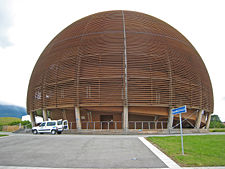
Facilities at CERN open to the public include:
- The Globe of Science and Innovation, which opened in late 2005 and is used four times a week for special exhibits.
- The Microcosm museum on particle physics and CERN history.
In popular culture
- CERN is mentioned in several works of fiction and science fiction such as Robert Sawyer's Flashforward and Dan Brown's Angels and Demons in which the theoretical Higgs Boson figures prominently.
- CERN's Large Hadron Collider is the subject of a (scientifically accurate) rap video featuring some of the facility's own staff[12]
See also
- Fermilab
- Léon Van Hove
- List of Directors General of CERN
- ROOT
- SLAC
- Ultra high vacuum
Notes
- ^ a: The twelve founding member states of CERN in 1954 were: Greece, Yugoslavia, Italy, Switzerland, France, Belgium, Netherlands, West Germany, Denmark, Great Britain, Norway, and Sweden.
References
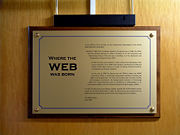
- ↑ 1.0 1.1 1.2 [1]
- ↑ CERN Website - Resources Planning and Control
- ↑ The CERN Name, on the CERN website. Last accessed on 25 October 2006.
- ↑ http://public.web.cern.ch/public/en/About/History73-en.html
- ↑ http://public.web.cern.ch/public/en/About/History83-en.html
- ↑ http://public.web.cern.ch/public/en/About/History95-en.html
- ↑ V. Fanti et al., Phys. Lett. B465 (1999) 335 (hep-ex/9909022)
- ↑ CERN Website - LINAC
- ↑ Overbye, Dennis (29 July 2008). "Let the Proton Smashing Begin. (The Rap Is Already Written.)". The New York Times.
- ↑ CERN press release, 7 August 2008
- ↑ "Red Carpet for CERN's 50th". CERN bulletin. November 2004.
- ↑ [2]
External links
- Official site
- CERN at 50
- CERN Courier - International journal of high-energy physics
- CERN chronology
- CERN e-Recruitment site - students and fellows programmes and staff employment opportunities
- CERN podcast
- CERN ultra high vacuum solar thermal collector.
- CERN visits
- Engineering the large hadron collider at CERN, Dr. Lyn Evans CBE, Ingenia magazine, June 2008.
- Globe of science and innovation info
- Hands-On-CERN (educational site about CERN and particle physics)
- Microcosm museum info
- NYT's a giant takes on physics’ biggest questions
- The cloud experiment
- The six billion dollar experiment (documentary)
|
||||||||||||||||||||||
